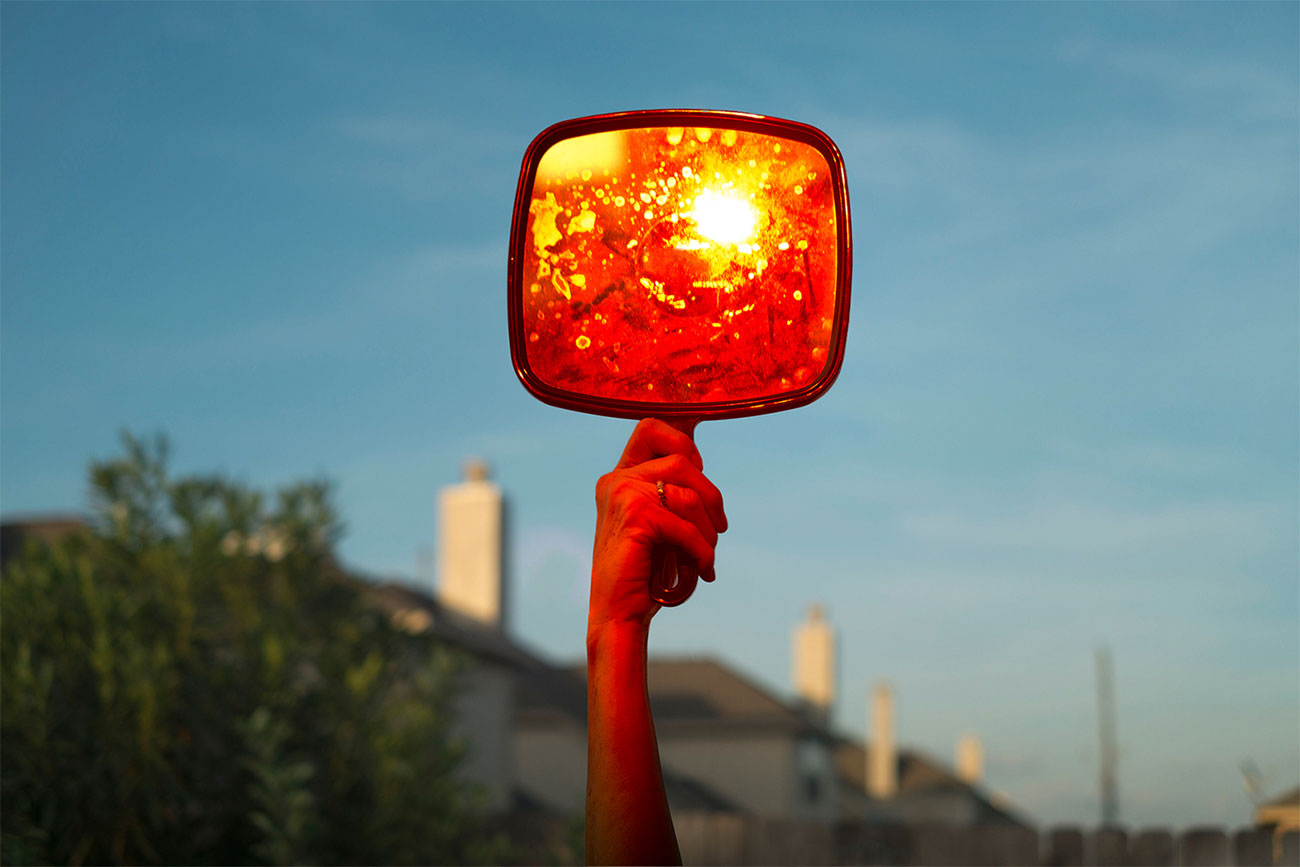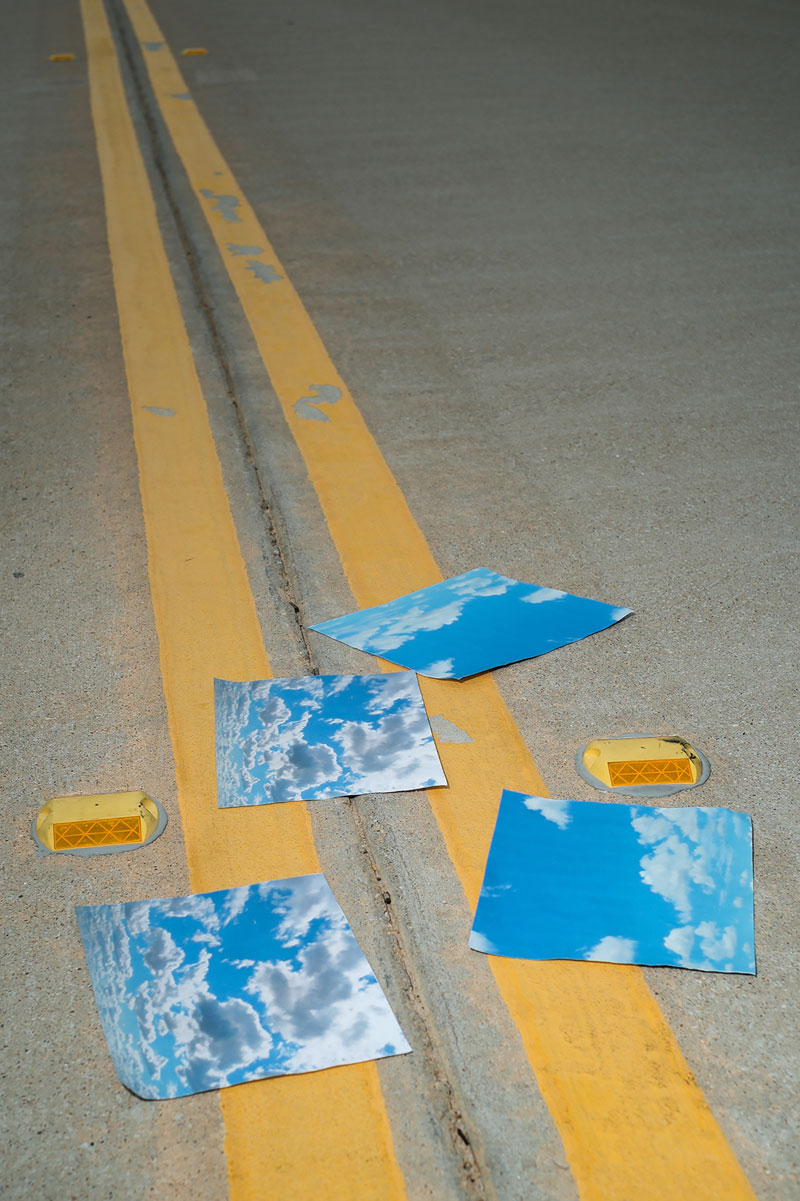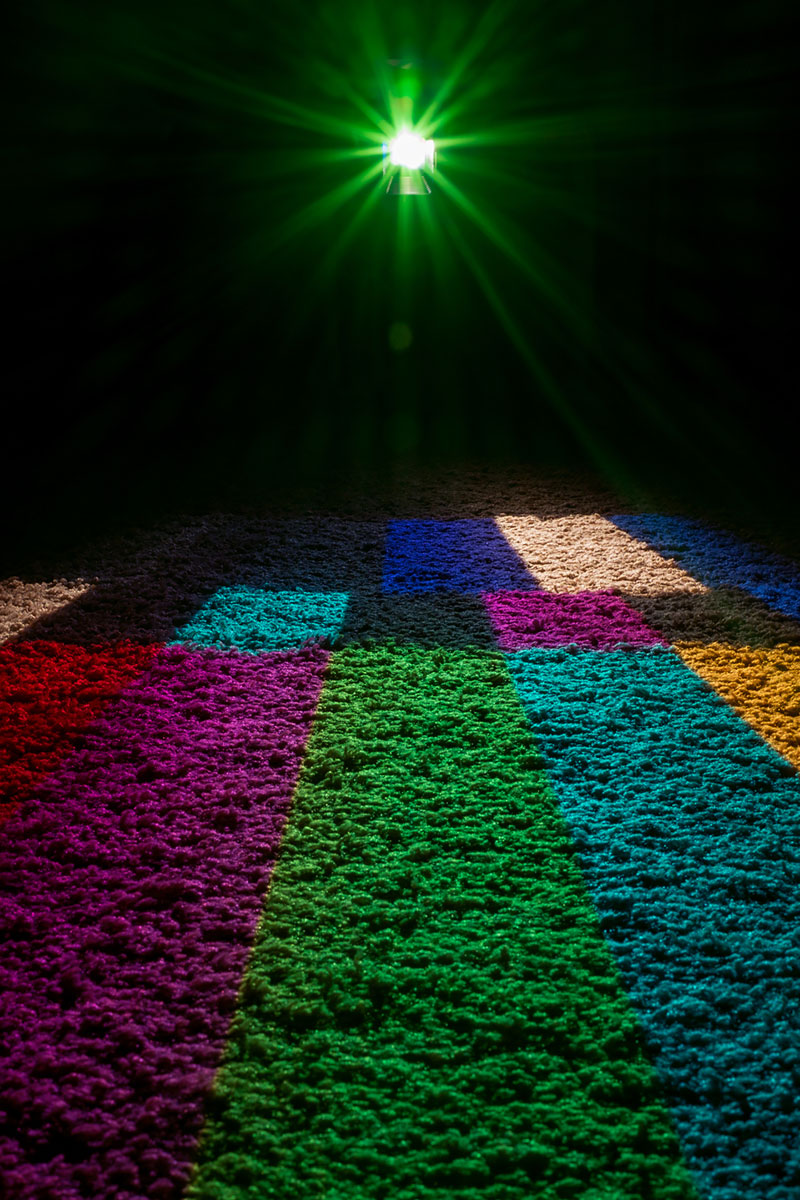

Hell and Backwards
Digital C-Print
24 x 36in
2012
The series Do the Priest in Different Voices combines elements of religious iconography with the more mundane elements of the everyday. While a few of the images feature a decidedly fantastical approach, I locate symbols of suffering and hope in quiet and particularly unspectacular settings. For me the pictures court notions of divination and prophecy. I’m interested in the possibility of omens and portents, not to predict the future or ensure success, but more simply as an alternate way of knowing and ordering experience.
Whatever claims I might make on the photographs are irrelevant, as the images drift perpetually to viewers who instill in them multiple meanings.
However, I wish the viewer to be completely oblivious to my personal investment in the work. The images must stand on their own, the formal properties engaging the viewer with little or no supplemental information. Standing before the prints, viewers begin to make their own associations with images and slowly connect one picture with another. The relationship between artist and viewer becomes one of collaboration. The viewer is literally confronted by the fact that there is no context provided for the imagery. The human mind is hardwired to seek repetition in the incoherent, to find patterns in thought that can be related to past experiences. The viewer begins to relate the images to each other, whether he or she is conscious of this or not. The audience searches and discovers fragments of form within and between images, just as I discern formal qualities during the picture-making process.
The viewers’ associations and assumptions are as valid as my own; as the artist who placed the images on the wall I claim no privilege. The images are not mine to possess; the camera shutter was under my power, but the photons recorded are not something I “created.” Each scene is something I witnessed at one time, just as perhaps the next person with a camera might behold. The images are not necessarily “about” me, nor my relationship to the subject. The event of the picture is not affixed to any particular context, but instead projects moving toward unimaginable future contexts. In fact, whatever claims I might make on the photographs are irrelevant, as the images drift perpetually to viewers who instill in them multiple meanings.


Clouds
Digital C-Print
24 x 36in
2012
Furthermore, what I deem as worthy of recording is influenced by every other visual representation that has passed before my eyes, the anthems and tropes, but also the detritus of American culture. The entirety of history – political, artistic and personal– joins before the camera lens. Admittedly this is a grandiose statement, which might appear to convey the photographer’s skill and originality in embodying elements of culture and art history. However, the opposite is true: At best I am a conduit, articulating imagery from, and ideas engendered, in the world at large. The photographs I produce are primarily about culture and ways of seeing first. The role of the artist is secondary. A vast network of visual imagery surrounds us, and my work simply relates and recasts ideas and images from the cultural ether.


Ghosts, Digital C-Print, 24 x 36in, 2012
Memory of a Blood Moon, Digital C-Print, 24 x 36in, 2013
Do the Priest differs from most of my other photographic work, which usually features a decidedly casual aesthetic. I frequently use small cameras with on-camera flash, which allow me to work quickly in almost any location. This approach also allows access to subjects that would otherwise be unobtainable. It’s possible to conceive and execute any image in the studio…and it’s impossible to conceive of everything in the studio. The permutations and possibilities are far too numerous. Furthermore, as indicated in the old, tired statement: Truth is stranger than fiction.
Put differently, images drawn from reality have a different charge to them. Or whatever noun one might wish to use: valence, agency, mood, atmosphere, etc. A picture inscribed with the residue of the everyday points to the simple fact that we are skin bags stuffed full of carbon, dust and atoms, on a planet traveling through the galaxy at 560,000 mph. Forms and shapes arise suddenly, and if timing, light, and luck align, a photograph is made that suggests at best an order that undergirds the universe, or at least the wondrous and comforting satisfaction of coincidence. I accept happily either possibility.
A picture inscribed with the residue of the everyday points to the simple fact that we are skin bags stuffed full of carbon, dust and atoms, on a planet traveling through the galaxy at 560,000 mph.


St. Augustine, 737, Atlas 5 Rocket Body
Digital C-Print
24 x 36in
2012
A haphazard aesthetic suggests a sense of immediacy to the viewer, a truth-to-appearance within the confines of the frame. A tilted perspective, blurriness, or a case of “mis-focus” works as a timestamp of sorts. A voice speaks from the imagined third dimension of the image. “This really happened. At a finite point in the past, in a specific physical location, the subjects and situations depicted in front of you occurred.” The voice fades back into the photograph, into the simulation of authentic experience, safe in the realm of distilled mimesis.


Stargate Sequence
Digital C-Print
24 x 36in
2012
And that is of course pure horseshit. A particular use of the camera or a certain shooting style doesn’t necessarily mean anything, and it’s hardly a comment upon the subject or the photographer’s intentions, you might say. However, it does suggest a particular way of looking at the world that may be born of immediacy or it may be the result of a beguiling manufacture of appearances. An interesting tension arises between a snapshot aesthetic and the deployment of a visible staged-ness. Depicting the willfully deliberate as happenstance invokes the medium’s ancient twinning of factual record and expressive subjectivity.
It is precisely this joining that enthralls. The photographic frame is a stage upon which the genuine and the contrived entwine. What is “real” and what is constructed, the objective and subjective, fiction and non-fiction are stirred together in a delightful dance. The metaphors are mixed because reason and logic are suspended. Just as the photograph emulates and flattens the third dimension, it also bears the visual language of narrative sequence, while defying a cause-and-effect reading. The temporal marks the photograph, a discrete record of light information from a previous moment. And yet it exists exclusive of time, free of the overriding logic of chronology. The photographic image is simultaneously immediate and past, dissembling and also earnest, strident and forthright in the very same effortless, equivocating breath.


Visible Man, Digital C-Print, 24 x 36in, 2012
The Pity, Digital C-Print, 24 x 36in, 2012